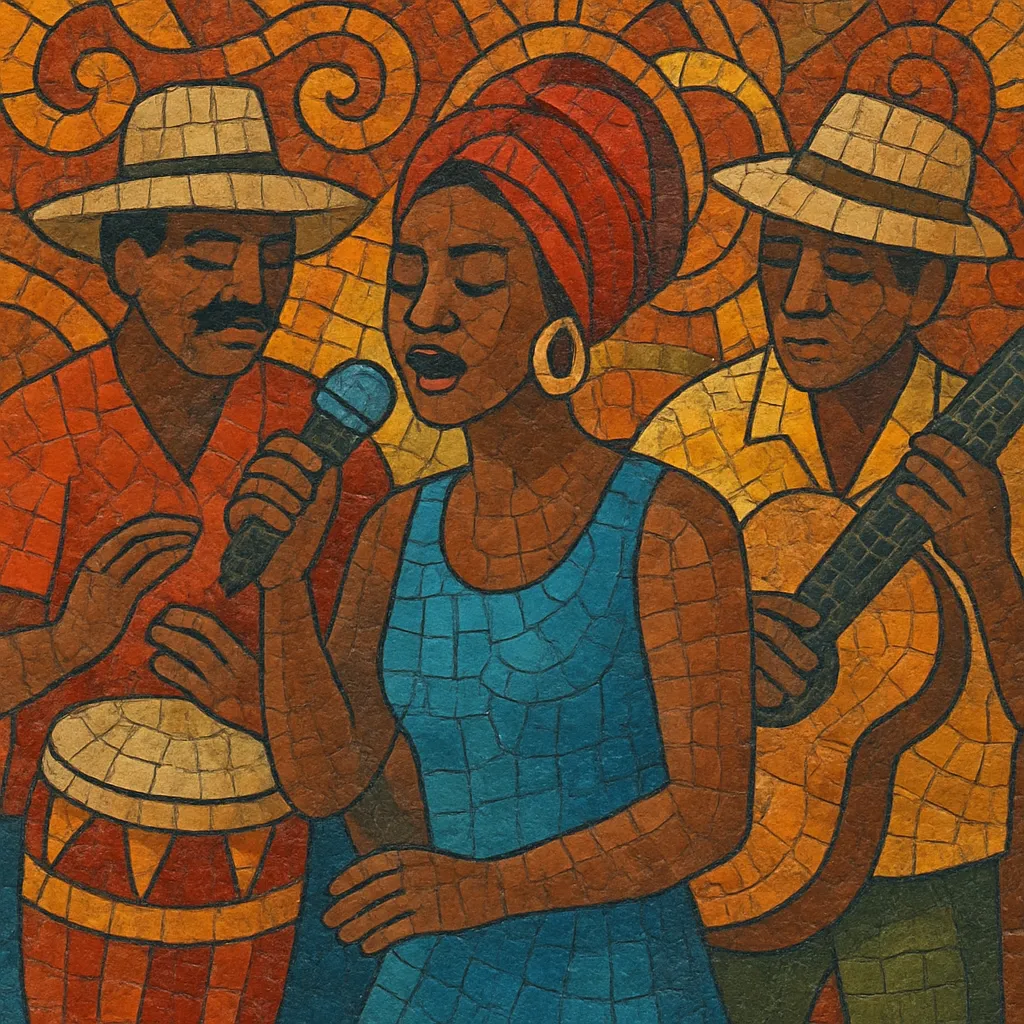Calypso is a vocal-driven Afro-Caribbean song tradition from Trinidad and Tobago, known for witty social commentary, topical storytelling, and playful double entendre. Rooted in call-and-response practice and the chantwell tradition, it blends African rhythmic sensibilities with French Creole and English-language verse craft.
Musically, calypso is typically in 2/4 or 4/4 with a lilting, syncopated groove built on tresillo and related Afro-Atlantic patterns. Arrangements range from guitar and cuatro-led small groups to steelband and horn-rich dance bands, with percussion such as congas, maracas, scratcher (güiro), and bottle-and-spoon providing the pulse. Harmony often favors diatonic, singable progressions (I–IV–V), and melodies sit comfortably in major or mixolydian modes.
Culturally, calypso is inseparable from Carnival, calypso tents, and extempo (improvised) battles—venues where singers deliver news, satire, and community critique. The style’s Golden Age produced a pantheon of iconic calypsonians whose influence spread across the Caribbean and far beyond.
Calypso emerged in Trinidad and Tobago from the kaiso/chantwell tradition linked to Carnival, stick-fighting (kalenda), and plantation-era cariso songs. After colonial restrictions on drumming in the late 19th century, performers adapted with tamboo bamboo and other alternative percussion, preserving the call-and-response vocal core. By the 1910s, commercial recordings began to capture the repertoire, and calypso tents became key spaces for seasonal performance and lyrical competition.
Between the 1930s and 1950s, calypso developed a sophisticated songcraft and star system. Pioneers such as Roaring Lion, Atilla the Hun, Growling Tiger, and Wilmoth Houdini shaped its topical, satirical voice, while expanding ensembles incorporated guitars, horns, and—by the 1940s—steelpan. The music traveled via records and touring artists, turning calypso into a pan-Caribbean cultural force.
In the mid-1950s, calypso crossed decisively into global pop culture. Songs like Lord Invader’s "Rum and Coca-Cola" and Harry Belafonte’s 1956 LP "Calypso" sparked a North American and European craze, spotlighting Trinidadian repertoire and performance style. Even as simplified "calypso" novelties appeared abroad, Trinidad’s calypsonians continued to refine the art at home.
Post-1962 independence saw towering figures such as Lord Kitchener and the Mighty Sparrow dominate Carnival with incisive social commentary and memorable hooks. The steelband movement matured alongside the tent tradition. In the early 1970s, Lord Shorty (Ras Shorty I) catalyzed soca—melding calypso’s lyric ethos with driving dance grooves and Indo-Caribbean elements—while later styles like rapso fused spoken-word poetics with calypso-derived rhythms.
Calypso remains a living tradition, sustained through competitions (e.g., Calypso Monarch), community tents, and recordings. Its lyrical wit, extempo battles, and Carnival centrality continue to shape the cultural life of Trinidad and Tobago. Across the Caribbean, calypso’s influence is audible in mento, ska, spouge, cadence-lypso, and, most prominently, soca—evidence of calypso’s foundational role in the region’s popular music.


